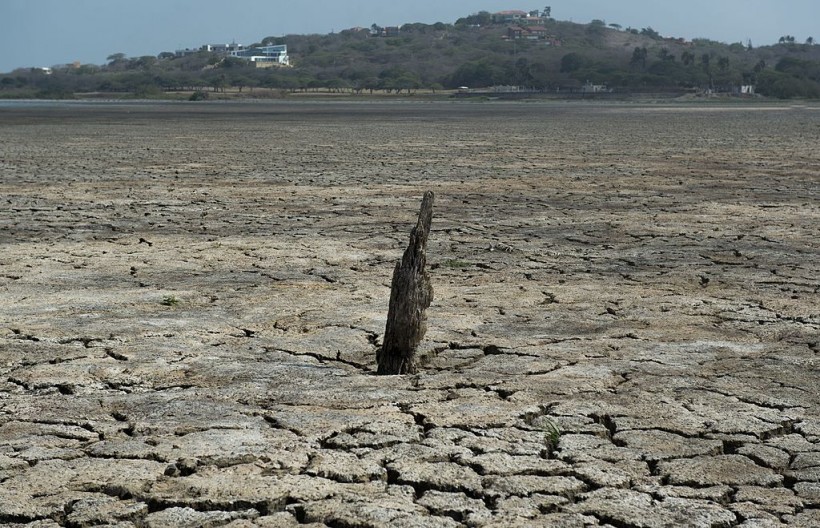The University of Maine's Climate Reanalyzer revealed that global temperatures over the past three days, from July 3-5, 2023, have reached new or equalled existing records for the hottest day on Earth since at least 1979.

A drought affecting Colombia exposes the bed of El Cisne lake, in Puerto Colombia, in the country's Atlantico Department, on July 31, 2014.
World's Hottest Days
As per Live Science, the Climate Reanalyzer shows that the average worldwide temperature rose to 62.6 degrees Fahrenheit (17 degrees Celsius) on Monday, July 3, while both Tuesday (July 4) and Wednesday (July 5) reached 62.9 degrees Fahrenheit (17.2 degrees Celsius).
Although these temperatures may not appear remarkably high, it is important to note that they represent the global average, taking into account measurements from both the Northern Hemisphere and the Southern Hemisphere, where it is currently winter.
Experts believe that the three-day hot streak was predominantly influenced by climate change and the concurrent occurrence of El Niño, a climate pattern characterized by warm sea-surface temperatures near the equator along the Pacific coast of South America. Research indicates that El Niño events can significantly impact atmospheric conditions, amplifying heat waves across the globe.
Kim Cobb, a climate scientist at the Georgia Institute of Technology, emphasized the significance of the Pacific Ocean, which covers nearly half of the Earth's surface. During an El Niño event, a substantial portion of the planet experiences heightened temperatures that contribute to the global average increase.
The Climate Reanalyzer gathers data from various sources, including atmospheric measurement tools, surface observations, and satellites, to estimate the global average temperature.
As per The Associated Press, the National Oceanic and Atmospheric Administration (NOAA) has expressed its intention to take these measurements into account when calculating its temperature records even though these values are not officially endorsed by the government.
READ ALSO: El Niño Warning: World Should Brace For Higher Global Temperatures, New Record Heat Levels, UN Says
Combined Threats of El Niño and Climate Change
Breaking temperature records extend beyond the month of July. The Copernicus Climate Change Service of the European Union revealed that June of the current year marked the hottest June ever recorded, with an average temperature surpassing June 2022 by 0.36 F (0.2 C).
The southeastern states of the U.S. and Texas have recently experienced dangerous heat waves, resulting in at least 13 heat-related deaths in Texas alone. Scientists have warned about the potential devastation of marine heat waves associated with El Niño, which could lead to significant damage to fish and coral populations, reminiscent of the global coral bleaching event in 2016 triggered by an El Niño episode.
Cobb said that the continuous setting of temperature records is concerning due to the consequences they bring. The combined impacts of climate change and El Niño increase the likelihood of surpassing the target set by the 2015 Paris Agreement of limiting global temperature rise to 1.5 C.
A report by the World Meteorological Organization in May indicated that the world is now more likely than not to breach this threshold within the next five years. Cobb emphasizes that, depending on the magnitude of this event, it could exacerbate the year-on-year warming caused by fossil fuel emissions, potentially leading to catastrophic outcomes.
The concurrent occurrences of rising temperatures, heatwaves, and the influence of El Niño pose significant challenges, emphasizing the urgency of addressing climate change and implementing measures to mitigate its impacts.
RELATED ARTICLE: NASA Satellite Spots Early Signs of El Niño As Warm Waters Move Eastward Across the Pacific Ocean to West Coast
Check out more news and information on Climate Change in Science Times.














